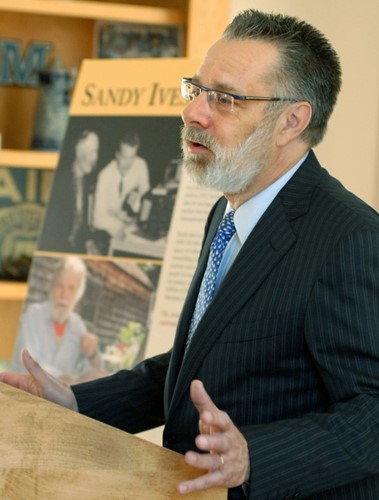David Taylor

In 1984, fresh out of folklore grad school, David Taylor came to Florida to work for the Bureau of Florida Folklife Programs. From 1984 to 1986, he was the folk arts coordinator for the Duval County Folk Arts-in-Education Project, a cooperative venture between FFP and the Duval County School System. From 1986 to 1987, he worked as a folklife programs administrator at FFP’s headquarters in White Springs, and, among other assignments, directed the program’s Maritime Heritage Survey Project. In June 1987, he moved to Washington, DC, to begin work in a folklife specialist position at the American Folklife Center of the Library of Congress. Later, he was named AFC’s Head of Research & Programs, and led a team of cultural professionals. He planned and directed multi-disciplinary field research projects around the country, coordinated public programs, and developed and led an annual field school for cultural documentation. He also served as Head of Acquisitions for AFC’s Archive of Folk Culture, the nation’s first archive devoted to traditional life and one of the largest repositories of its kind in the world. He served as a member of the United States delegation to the World Intellectual Property Organization’s intergovernmental committee on folklore, traditional knowledge and genetic resources. In 2012, he left AFC in order to begin work, at the Library of Congress, in the position of External Relations & Program Development Officer, which involves working with members of Congress, donors and collaborators, and coordinating a variety of programs among the Library’s numerous curatorial divisions.
David, a material culture specialist, is an expert on traditional watercraft and is proud of the fact that his field research, writing and photography—undertaken in the 1970s and ‘80s—provided inspiration for the establishment of the award-winning Wooden Boat Museum of Newfoundland and Labrador. In 2016, the Museum named him an honorary lifetime member at a special event in St. John’s. Outside of his work at the Library of Congress, he is involved in research and writing about European and American decorative arts of the nineteenth and twentieth centuries. The subjects of his most recent work in this area are two iconic designers: Dr. Christopher Dresser (1834-1904), the seminal British industrial designer; and Georg Jensen (1866-1935), the silversmith and designer who played an enormous role in bringing Danish silver to international prominence.

